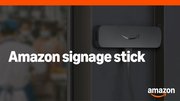Reaching the back to school market with DOOH advertising
Outlined are five steps to making the most out of digital ad campaigns in the months of August and September.
August 13, 2009
According to the U.S. Census Bureau, the back to school season is second only to holiday shopping in the amount of revenue generated for retailers. As such, the youth market has long been a strategic target for many advertisers as it represents a critical time period when businesses can see a big boost in their annual revenues, and more importantly when they can capture and create lifelong customers with this impressionable and fresh audience.
Yet, this audience has grown increasingly elusive to advertisers over the years as they spend less and less time with traditional media outlets and more and more time on the go, watching TV on mobile devices or on DVRs, that while great for the consumer, make it even tougher for advertisers to reach their target.
However, with the explosive growth of digital out-of-home display networks, advertisers can target 18 million college students and 75 million total students nationwide with ads that reach them while they are out and about in their daily routines – on campus at student unions, recreation centers and bookstores and off campus at quick service restaurants, malls, gas stations and many other places that this young audience and their families visit everyday.
Not only does digital video advertising reach audiences out and about, but it also captures and keeps their attentions better than other advertising mediums. In a recent study college students reported that place-based digital video advertising is more unique, entertaining and less annoying than both traditional and other kinds of digital advertising, and moms ranked it as the number one way to capture their attention. (Source: OTX Digital Out-of-home Media Awareness and Attitude Study).
This dynamic media offers great potential to deliver far more targeted, effective brand messages, and at a fraction of the cost of traditional advertising. But with so many diverse opportunities available, what's the best way for companies to go about leveraging this new medium?
Here are five steps to success to take the greatest advantage of this new advertising medium to reach the back to school marketplace.
1) Focus on life patterns. This step means mapping the behaviors of your target audience based on their daily routines or "patterns" to digital video locations where they work, play, shop and socialize. For example, a digital video campaign targeting college students would include recreation centers and student unions on campus, as well as convenience stores, coffee shops, bookstores and retail locations off campus, while a campaign designed to reach the younger back to school audience and their moms would include screens in places like the waiting rooms of pediatricians' offices, gas stations, juice bars and supermarkets. The key here is to intercept college students or moms with kids by mapping their behaviors and routines with place-based touch points on their path to purchase and weave a media strategy through the myriad of places that college students and moms and families visit daily or weekly.
2) Consider the context. The power of digital video advertising is that it offers a tremendous opportunity to reach youth audiences in places where they are more likely to be attentive to relevant brand messages. There are two key points to consider regarding context.
First, unlike other media, where the rise of digital video recorders or ad blockers enable viewers to easily skip ads altogether, place-based digital video advertising can reach - young people and capture their attention. This is particularly true when they are in an area where they have time to absorb the brand messaging, such as hanging out in the student union or recreation center, in bookstores, socializing at an off-campus bar (for the 21+ crowd) or shopping at their favorite retailer.
Second, consider how to match the attributes of your brand to the places where your audience goes. Think about the setting (a recreation center, a bookstore, a sports bar?) and the frame of mind of the clientele (thinking about how to stay healthy, seeking information, socializing with friends?) and tailor your messages accordingly.
Let's say that your product appeals to a health-oriented mindset. In that case, delivering a message such as "Stay Energized" would work perfectly at a health club, whereas you might want to focus on a message about convenience to someone who is "on the go" at a gas station.
An added benefit of digital video advertising is the ability to deliver a message that is highly customized to both the audience and the local conditions. Imagine the benefit of the quick service restaurant advertising smoothies on warm days on screens in recreation centers while pushing their hot soup in student unions when the temperature drops below 50.
Marketers who consider the context will be rewarded with an attentive, engaged audience.
3) Bring your message to life with great creative. Once you have developed your 'Big Idea', place-based digital video advertising offers a rich, vibrant and cost-effective medium for delivering your message. We are not talking about the million-dollar television commercial, nor are we talking about a static billboard or an Internet ad banner.
Effective place-based digital advertising creative sits somewhere between TV, the web and outdoor advertising, leveraging the best capabilities of each of these media. People report that digital video advertising is entertaining like television. They also report that it is informative and relevant like the web. And, people report that with simple typography and imagery along with video and animation, this medium captures their attention like outdoor advertising. Combining these characteristics and closing the loop with an interactive call to action using SMS drives further engagement for younger audiences who use their mobile phones as their primary means of communication.
The combination of entertainment, relevance, sight and motion with contextual relevance and interactivity is a powerful approach for stopping consumers in their tracks.
4) Leverage existing digital assets. As most advertisers already have an online strategy in place, digital video advertising locations offer a great way to get more 'play' out of existing content (such as a Flash movie from a company web site, user-generated videos and digital assets from print campaigns) while taking advantage of new, high-impact ways to reach consumers.
Additionally, digital content can be changed, refreshed or customized more easily than other types of creative executions like print or broadcast video, allowing you to test your ads and then quickly refine your communication over time as your learn what is working.
5) Create the perception of ubiquity.When consumers see messages in the midst of their daily experiences, and especially with new, young consumers the impact can be tremendous. With digital video advertising reaching students and their parents in places where they go every day, it is now possible for advertisers to create meaningful moments at a reasonable cost.
Because contextually relevant messages can be mapped to specific behavior patterns, advertisers can appear to be 'everywhere' to their target audience, even with a relatively small media buy. That's because messages can be directed to the venues that truly matter to them ─ in particular, in places and at times where they are more likely to be open-minded to a message.
Because place-based digital video advertising builds on the strengths of TV, the Web and outdoor, it can be used either as the primary way to reach this youthful audience or as an extension of campaigns beyond print and online.
Plus, given the cost relative to other media, it is easy to see the cost effectiveness that place-based digital video advertising can deliver.
Scott Hines is co-founder and vice president of marketing and customer experience at SeeSaw Networks. Prior to co-founding SeeSaw, Scott designed numerous digital marketing, advertising and e-commerce applications used by Fortune 500 businesses and market leaders such as Bloomingdale's, Harrah's Entertainment, Kohl's, Nordstrom, Saks Fifth Avenue, Medtronic, Pfizer and Oracle.








